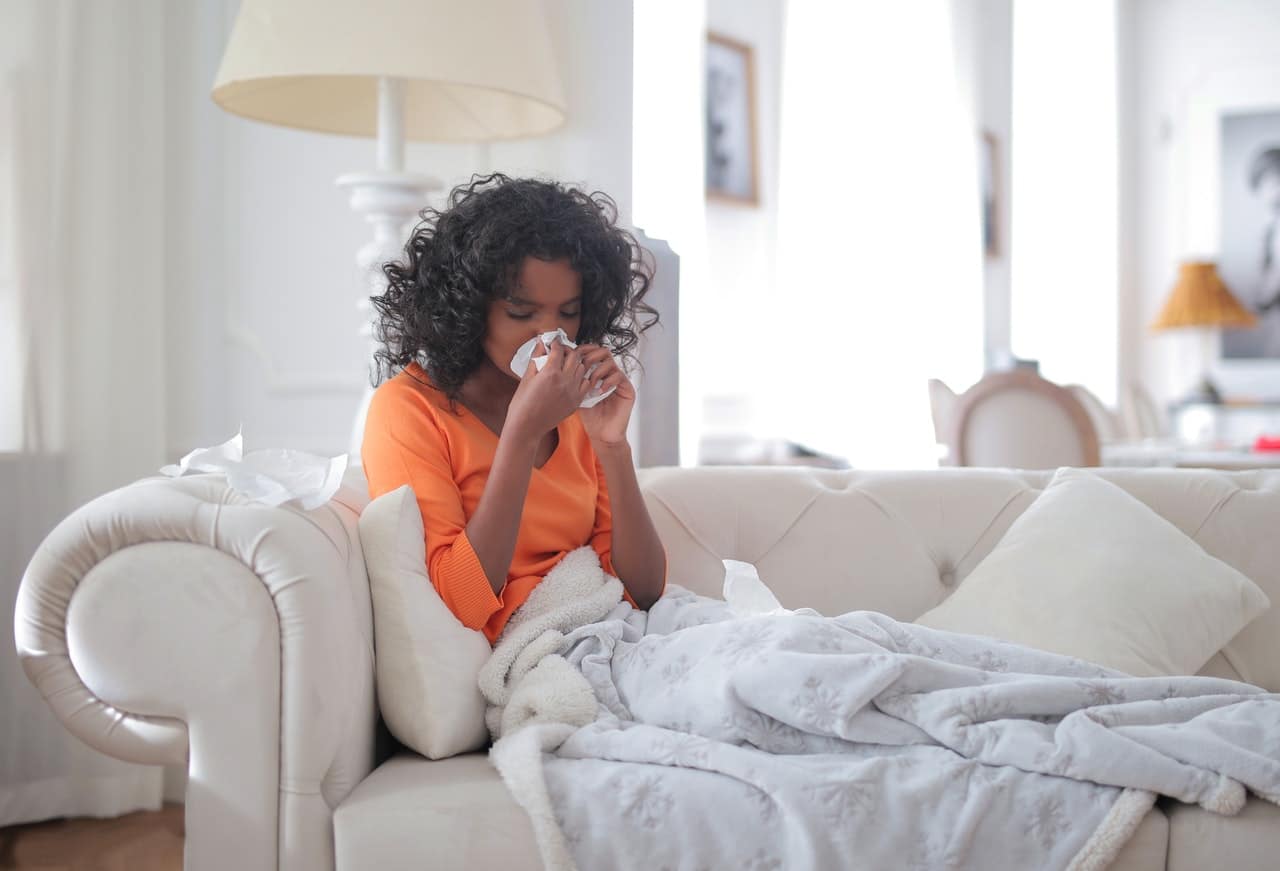Fall allergy season mostly starts from mid-August until the first frost when an uptick in doctor’s appointments, emergency room visits, and in some cases, hospitalizations for patients who find themselves with allergy symptoms such as; coughing, sneezing, postnasal drip. Fall allergy triggers are many and different but can cause as many symptoms as in spring and summer. They include…
IMAGE: PEXELS
Molds
Outdoor molds are one major cause of fall season allergies. Molds first appear in early spring but will thrive until the first frost. Molds are mostly found in soil, compost piles, and leaves that cover the ground during the fall. Mold spores are very common airborne allergens. In addition, their qualities of being light, very small make them easily inhaled into the lungs.
How To Avoid Molds
Keeping humidity levels low helps in keeping molds at bay. Basements and bathrooms can be the most troublesome areas in a home. Making sure that fans run during showers and baths help remove moisture from the air. Fixing any leaks in the plumbing also helps to keep off excess moisture in the air.
Dust Mites
Dust mites are small arthropods that feed on flakes of human skin, which are naturally shed around the home. Dust mites are common year-round allergens that thrive in high temperatures. They usually die in extreme temperatures of above 75 or if the humidity is below 70 percent.
How To Fight Dust Mites
While dust mites are tremendously difficult to eliminate, there are some simple ways to keep them at bay. Dusting and vacuuming alone might not be enough to remove them. Regular washing of beddings with hot water removes excess skin build-up and helps to keep dust mites away. For severe allergies and asthma caused by dust mites, it may be important to invest in a mattress cover that will prevent them from finding their way into the mattress fibers.
Pet Dander & Fur
Pet dander is the dead skin shed by pets in the home. Up to 40 percent of people in the US with seasonal allergies also have pet allergies. Pet allergies are caused by an extra-sensitive immune system that reacts to pets’ dander, fur, or fluids.
How To Avoid Pet Dander & Fur
The most efficient way to keep pet dander and fur away is to frequently clean and vacuum, even the areas behind cabinets and under the furniture. In order to lower levels of pet dander, it is crucial to get the pet dander out from all the potential hiding spots.
Frequently brush cats and dogs outside the house, if possible, helps to remove any shedding or loose fur. Regular bathing also helps in removing loose hair and dander.
Ragweed
One of the major causes of fall season allergies is the ragweed plant. A single ragweed plant produces over one billion pollen grains in a season. Ragweed grows on a large scale throughout the South, North, and Midwest. Its lightweight pollen grains can be blown up to 400 miles by the wind.
How To Fight It
The best way to avoid fall season allergies is to keep your windows closed as often as possible to avoid having a lot of pollen entering the house. The cool weather may make it tempting to open up the windows, but the more they are open, the higher the chance of making their way into the house.
Other Weeds
Other weeds growing in different parts of the country, such as pigweed, sheep sorrel, curly dock, goldenrod, and sagebrush, can cause fall season allergies.
What To Do If You Start Experiencing Fall Season Allergies Symptoms?
For most people, fall allergies can be managed with over-the-counter or prescription allergy medications that have antihistamines. The medications usually come as pills, throat lozenges, eye drops, or nasal sprays.
Should you visit your doctor, they will help find out the cause of your allergic symptoms. In addition, they might enquire about your medical history and symptoms and may recommend a skin test.
For a skin test, a tiny amount of the allergen is placed on the skin, mostly on your back or the forearm, and then prick or scratch the skin underneath. If allergic to it, a small, raised bump that itches as a mosquito bite appears. A blood test may also be recommended to figure out a cause.
If you are interested in even more lifestyle-related articles and information from us here at Bit Rebels, then we have a lot to choose from.


COMMENTS